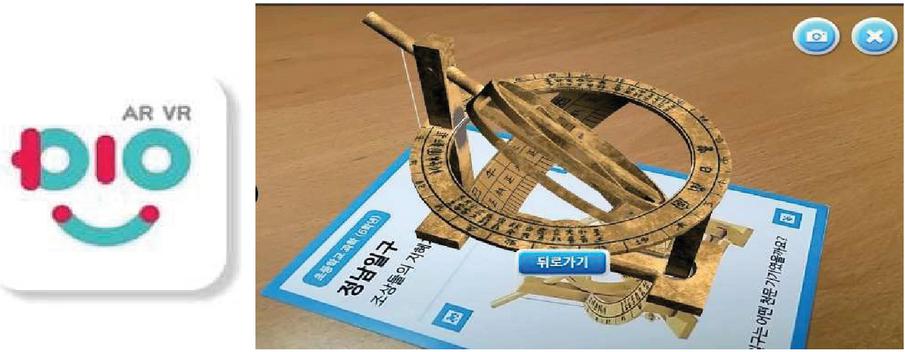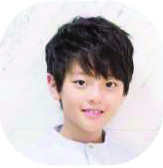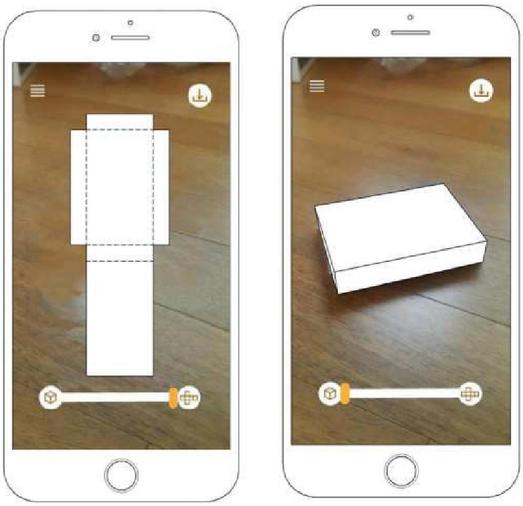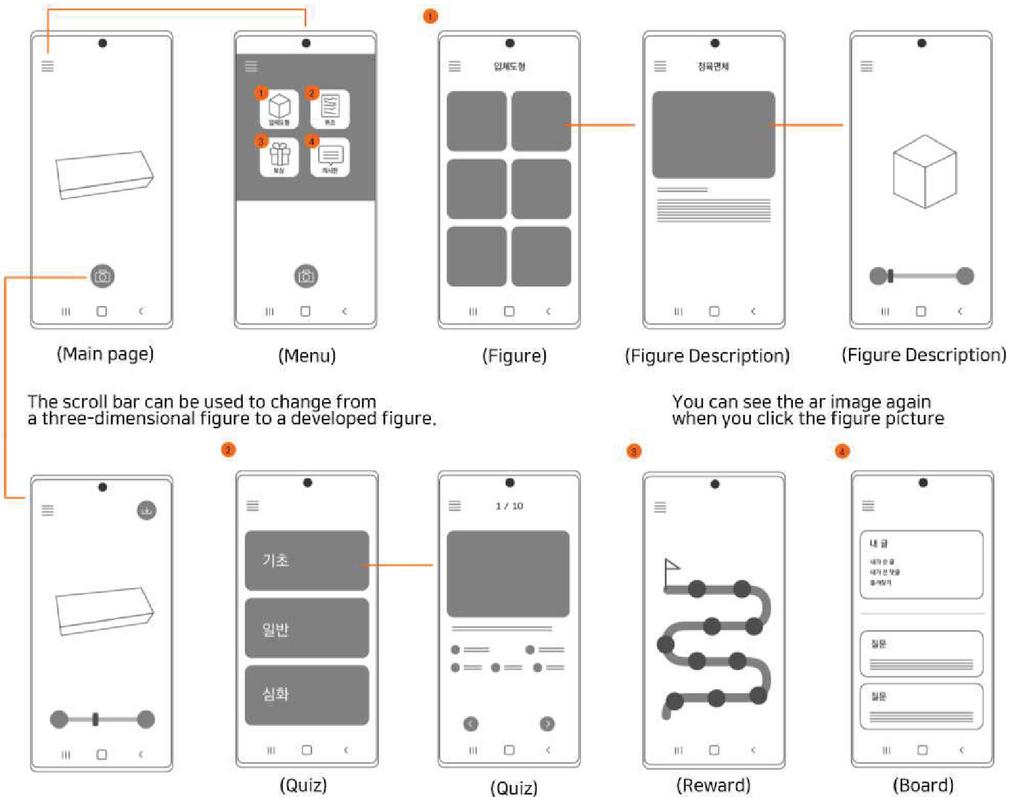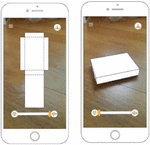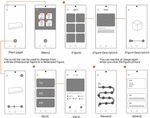Augmented Reality-based Educational Content Application Development
Hae Kyung Chung1 and Jang Hyok Ko2,*
1Konkuk University, Chungju, South Korea
2Sahmyook University, Seoul, South Korea
E-mail: hkchung1@kku.ac.kr; janghyokko@syu.ac.kr
*Corresponding Author
Received 27 April 2021; Accepted 24 August 2022; Publication 29 April 2023
Abstract
In this study, we developed an augmented reality-based educational application that can learn the relationship between life and mathematics by implementing objects in everyday life as a three-dimensional figure of an augmented reality environment. AR images can induce interest in math study to elementary school children, and children who have started learning three-dimensional figures can easily imagine the shape of figures in real life and provide development maps so that they can grasp the relationship between each development and three-dimensional figures. In addition, it is possible to efficiently learn mathematics through an augmented reality-based educational content providing apparatus and method. In this study, firstly literature study was conducted to understand overall understanding of education service and completed persona through survey methods such as in-depth interviews. The user’s goal was simple, easy to operate the app.
Keywords: AR/VR, mathematics education, personas, in-depth interviews.
1 Introduction
Augmented reality is a field of virtual reality (VR), which is a computer graphic technique that synthesizes virtual objects or information in an actual environment to make it look like an object existing in the original environment [5]. It is also called mixed reality (MR) because the real world is displayed as a single image by adding the virtual world with additional information in real time. Since research on augmented reality technology began, research to apply this technology has been continued in various fields, and studies are being conducted to incorporate augmented reality technology in the field of education. The Ministry of Education has developed a realistic digital textbook that introduces virtual (VR) and augmented reality (AR) in preparation for the 4th industrial revolution. There are quite a few figures in actual mathematics that are difficult to recall when viewed on a plane. According to the paper on the analysis of the spatial visualization ability of mathematics gifted children on three-dimensional figures published in 2007, mathematics gifted students also had a little difficulty in imagining and expressing objects depicted on a plane in three dimensions.
Learning efficiency increases when elementary school students learn through virtual (VR) and augmented reality (AR)-based content that considers their ability to think and solve problems [1].
Convergence education through various educational methods such as STEAM education, maker education, software education, and augmented and virtual reality education is being proposed and implemented to achieve the next-generation education goal in the 4th industrial era. Education using virtual reality (VR), which is expected to be effective, is attracting attention. The curriculum system currently being implemented requires specific educational hardware for each subject characteristic, but it is predicted that virtual reality education will be able to learn a variety of learning in the same space as specific educational hardware enters virtually. Improvements are also expected [2].
In addition, according to the thesis on the effect of the use of geometric teaching tools on spatial perception ability, an experimental diagnosis in which two 5th graders are randomly selected in downtown Seoul, and one class conducts classes using the school equipment (31 students, one class is general math As a result of the study, learning using geometric teaching tools is effective in enhancing spatial perception ability, and the importance of learning using geometric teaching tools is becoming more important) [3].
Therefore, this study aims to develop an augmented reality-based educational application that can learn the relationship between life and mathematics by implementing a three-dimensional figure of an augmented reality environment for objects in everyday life. In other words, AR images can induce interest in math study to elementary school children, and children who have started learning three-dimensional figures can easily imagine the shape of figures in real life and provide development views to grasp the relationship between each development and three-dimensional figures. The goal is to make it possible.
2 Competitor Analysis
• AR Platonic Solids
Figure 1 AR platonic solids logo and UI design.
This application allows you to see 12 different shapes through augmented reality. You can also easily download recognized pictures from the homepage. However, because it is in English, it is difficult for Korean students to access it, and additional explanations other than pictures are insufficient. This application shows 5 Plato Solids in augmented reality and many geometric figures used in schools and high schools.
• Realistic Contents
Figure 2 Realistic contents logo and UI design.
It is a content that provides a rich learning experience by using 3D modeling graphics and 3D visual effect technology, centering on the contents of the textbooks. Realistic content was produced using AR (augmented reality), VR (virtual reality), and 360-degree photo and video data production technology. Realistic content provides a realistic experience through visual and spatial expansion.
– Content type
(1) VR (Virtual Reality)
– It provides an immersive three-dimensional experience in a virtual space completely blocked from real space.
– It allows learners to directly experience or manipulate things that are difficult to manipulate or observe in reality.
– You can experience VR by combining a smartphone and HMD (Head Mount Display) equipment.
(2) Augmented Reality (AR)
– It is a technology that instantly shows related information in a three-dimensional form in a real or place.
– Augmented reality content provides interaction based on manipulation activities and mobility.
– When the AR marker is recognized as a camera, virtual objects appear superimposed on the reality.
(3) 360 degree photos and videos
– You can indirectly experience the real environment, not computer graphics.
– Users can move their gaze freely and explore the space.
3 Empirical Study for Usability Improvement
3.1 In-Depth User Interview
For in-depth interviews, the following questions were asked to four boys and girls in the lower grades of elementary school.
1. What parts are difficult when learning three-dimensional figures?
“The textbook is confusing because it is not a three-dimensional but a flat picture.” “In the case of a dice problem asking what is the opposite side of a specific surface in an unfolded cube development view, it is not easy to come up with a folded form of the development view.” “It is difficult to imagine the invisible part of the stacking tree problem in which several cubes are stacked in various shapes.”
2. If there is an augmented reality app for math education related to real life, do you think it will help you study 3D figures?
“When I see things that I use frequently become three-dimensional and developed through the application, it is fascinating, so it would be nice to use them often to study.” “I think it will be helpful because you can easily see the map on your smartphone without cutting it out yourself. I think it would be comfortable to see the complicated development drawing easily.” “If you really pay compensation, I think I will continue to study.”
3. Is there anything more to be done?
“In addition to explaining the basic three-dimensional figures, it would be nice to explain the three-dimensional objects in the math problem book (e.g., stacking trees).”
3.2 User Personas
• Age: 12
• Occupation: Student
• Gender: Male
• Personality: Personality that works hard if you have a goal I am interested in new things, but I easily lose interest when I fall behind others.
• Mobile phone experience: 4 years
• Related application experience: None
• Scenario
He is a student who doesn’t like math very much. When she learned the floor plan type, she had some grades through memorization, but it was difficult to understand from the three-dimensional figures, and her grades fell and she lost interest. She has a lot of fun and participates in the experience of making three-dimensional figures herself at school, but that’s all.
• Goal
Seeing that mathematics is directly related to real life, I am interested again. He is constantly motivated through rewarding game elements. He often skips difficult or wrong problems without trying.
• Behavior
They only solve basic problems that are easy to get high grades. You will continue to solve problems in order to get rewards given in stages. Through AR, I open several times to understand the three-dimensional figure in my head.
• Dissatisfaction
Difficult or wrong problems are often skipped without trying.
4 Results
When you press the menu button, a total of 6 menus are displayed. If you press the 3D shape button, you can see the basic shapes of the 3D shape as an AR image, and you can also see the features of each shape.
Figure 3 Exploded view (left), Three-dimensional view (right), Works of Soyeon Choi (Konkuk University 3rd year).
Figure 4 Wire flowchart, works of Soyeon Choi (Konkuk University 3rd year).
When you take a picture of an object, a three-dimensional figure that emulates the shape of the object appears as an AR image. When you take a picture of an object, a three-dimensional figure that mimics the shape of the object appears as an AR image, and you can change the shape from a three-dimensional figure to a developed view by scrolling the bottom of the second picture. And through the save button on the top right, you can save the objects you took in the album and take them out again if necessary.
• Main application functions
1. Objects photographed through AR are viewed as three-dimensional figures, showing that mathematics is related to real life.
2. Explain the characteristics of each three-dimensional figure and the difference with other figures in writing.
3. Improve understanding of three-dimensional figures by showing the process of changing from a developed view to a three-dimensional figure.
4. Improve learning effect and motivate study by adding game elements such as quizzes and rewards for each difficulty level.
5. Using the bulletin board function, you can ask and answer questions.
5 Conclusion and Suggestions
Augmented reality-based educational content delivery application provides information about the shapes that the user wants to learn or shapes that correspond to objects in everyday life. That is, it receives the user input through the application, and generates a three-dimensional drawing for the shape in an augmented reality environment. In addition, the augmented reality-based educational content providing apparatus may output educational content including three-dimensional figures in an augmented reality environment through an application of a user terminal. Educational content includes a three-dimensional view, a three-dimensional development, a decomposition process from a three-dimensional view to a development view, and a process of combining a three-dimensional view in a development. In addition to the above-called functions, quizzes for cube, rewards for quiz correct answers, questions to the administrator of the application, bulletin board to create a question, such as a question, it is possible to set the stereoscopic and user privacy for each object and object taken. Although the cubo-cubic generating unit is not provided with a marker separately on the object, by recognizing the surface, vertex, edges of the object on the basis of image analysis, it is also able to implement a three-dimensional shape, it can be implemented in a three-dimensional shape for a variety of objects present in the daily life. In addition, as three-dimensional figures are provided, compared to figures printed on a flat surface such as existing textbooks and study papers, the three-dimensional figures can be viewed from various angles desired by the user, so that figures can be understood more three-dimensionally, and shapes and features of each figure You can further improve your understanding of. In addition, the three-dimensional figure generator may pre-store information on the number and location of faces, vertices, and edges for each type of three-dimensional figure. Thus, the three-dimensional view generating unit can determine the type of three-dimensional shape from the surface, the number and position of the vertex and the edges of the three-dimensional shape. Therefore, by linking objects taken in everyday life with mathematical shapes, children studying shapes can discover mathematics in real life and can cause interest in mathematics.
The decomposition process or the combining process may be selectively provided based on a user input through an indicator (for example, a slider) that selects the output of the process of decomposing a three-dimensional figure to a developed view or a process of combining the developed view to a three-dimensional figure. In addition, the content controller may provide a decomposition process or a combining process step by step according to the degree of selection of the indicator (for example, the degree of movement of the slider). The content controller may provide the decomposition process and the combining process step by step according to the user’s learning difficulty. The learning difficulty level can be inputted through the application by the user setting his or her own learning difficulty level. The content control unit may provide a decomposition process and a combination process step by step according to the learning difficulty level input by the user. In addition, the content control unit may determine a learning difficulty level according to whether a quiz provided to a user is correct in relation to a three-dimensional figure and provide a decomposition process and a combining process step by step. Through this study, children can implement a three-dimensional view of the augmented reality environment for objects in everyday life, learning the association between life and mathematics. They can also learn mathematics efficiently through augmented reality-based educational content delivery devices and methods. However, further verification is required for learning efficacy of this app.
Acknowledgment
This research was supported by Basic Science Research Program through the National Research Foundation of Korea (NRF) funded by the Ministry of Education (NRF-2021R1I1A3047836).
References
[1] Gil-sang Yu (2011). Technology trend of smart education using mixed reality. Korean Journal of Information Technology, 9(3), 63–73.
[2] Hyunji Lee, Wonseob Kim (2020). Analysis of domestic education cases based on virtual reality technology convergence and classification of content types-Focusing on middle school education. Korean Society for Science and Art Convergence, 38(3), 237–252.
[3] Park Man-gu, Ko Sang-suk, Jeong In-cheol, and Kim Eun-young (2010) Effects of the use of geometric teaching tools on spatial perception, Joumal of the Korean School Mathematics Society, 13(2), 303–322.
[4] Making Math gifted, report on Dong-a.com, Sep. 2009. Hye-shin Yok
[5] wikipedia.org
Biographies
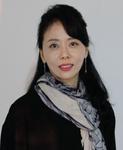
Hae Kyung Chung received the bachelor’s degree in oriental painting from Ewha Womans University in 1996, the master’s degree in visual communication design from The Ohio State University in 2004, and the Doctor of Philosophy degree in digital media from Ewha Womans University in 2008, respectively. She is currently working as a Professor at the Department of Visual communication design, Faculty of Media, Konkuk University. Her research areas include UX Design, and Service Design for Experience.
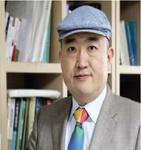
Jang Hyok Ko received the bachelor’s degree in physics education from Seoul National University in 1995, the master’s degree in mechanical engineering from Ohio State University in 1997, and the Doctor of Philosophy degree in mechanical engineering from Ohio State University in 2001, respectively. He is currently working as a Professor at the Department of Computer Mechatronics at Sahmyook University. Her research areas include automotive engineering and thermo-fluid sciences.
Journal of Mobile Multimedia, Vol. 19_4, 1021–1030.
doi: 10.13052/jmm1550-4646.1945
© 2023 River Publishers

